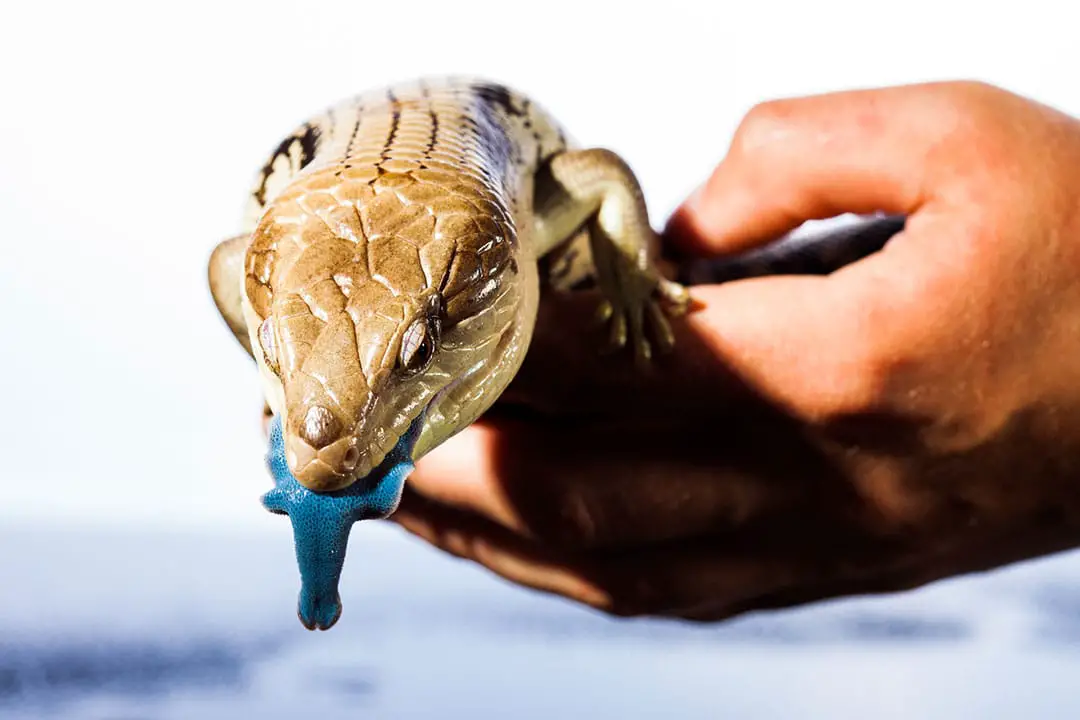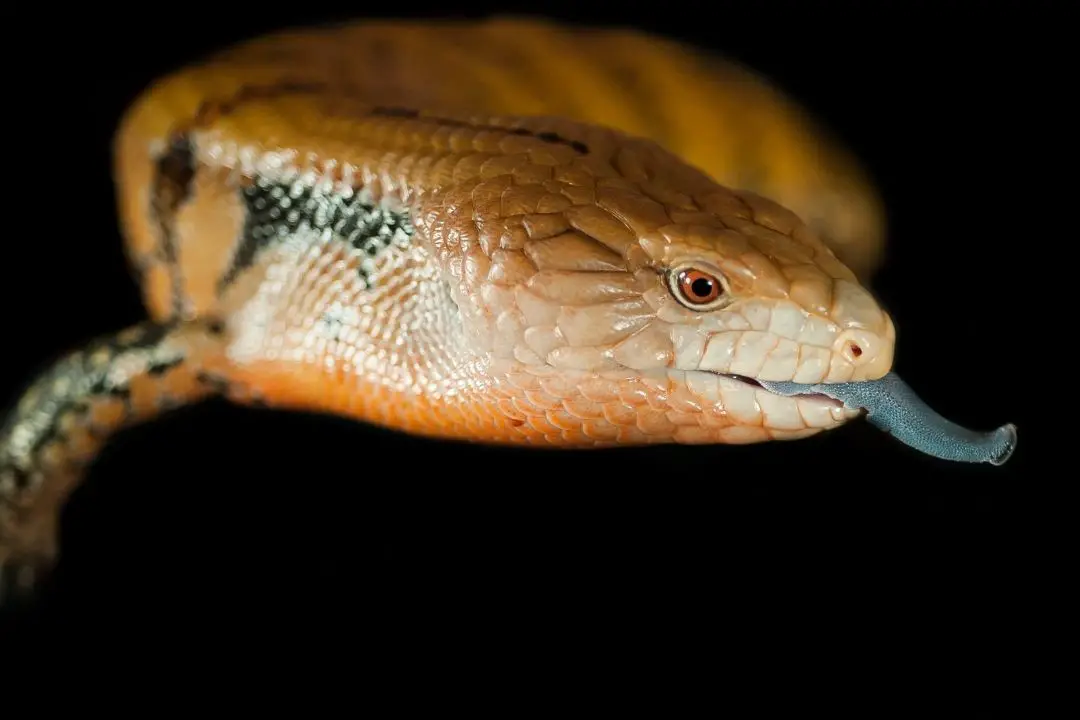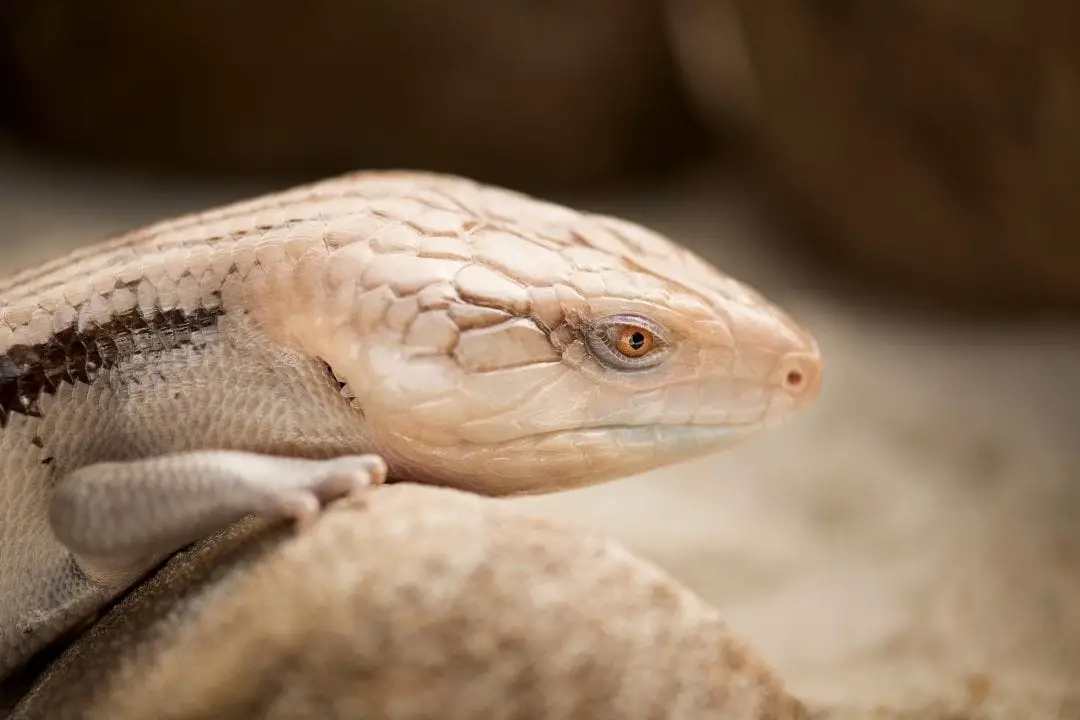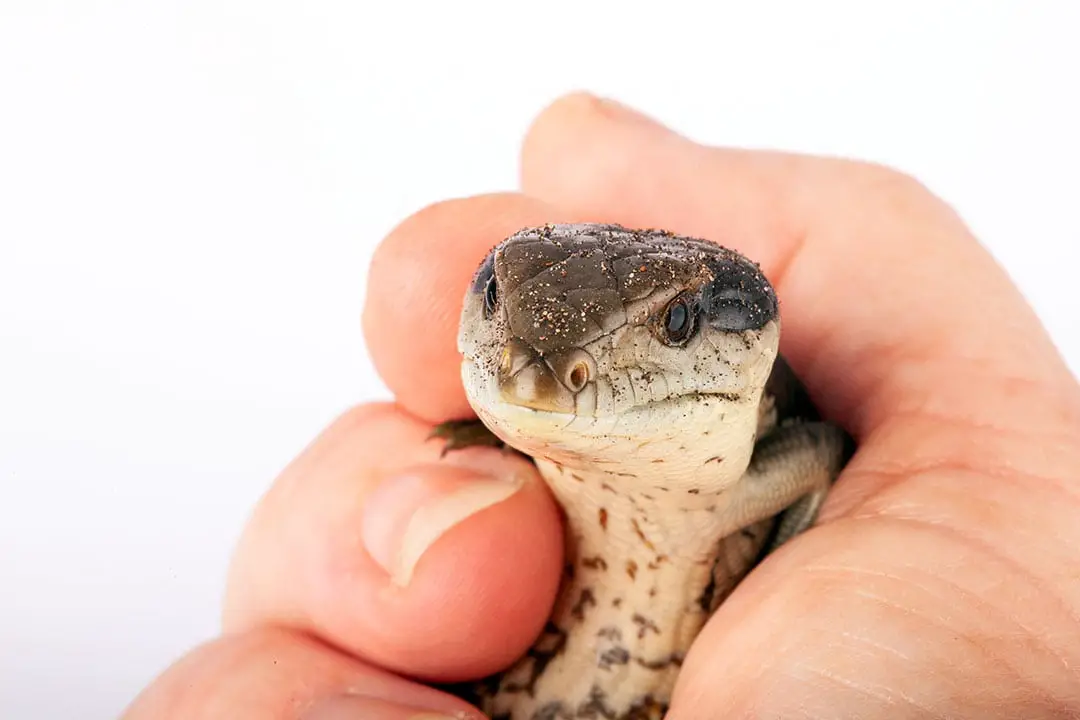Blue-tongued skinks are members of the Tiliqua genus. They are large and all the species in the genus are set apart from other skinks by their size and their characteristic blue tongue.
They are popular pet lizards since the most common subspecies in captivity have easy husbandry requirements.
Their large size also means that they are less fragile than other common species. You may be wondering if they have a friendly personality.
But, are blue tongued skinks friendly?
On average, blue-tongued skinks are friendly lizards. Captive-bred skinks are docile once tamed, and make interesting pets to interact with.
Young Skinks
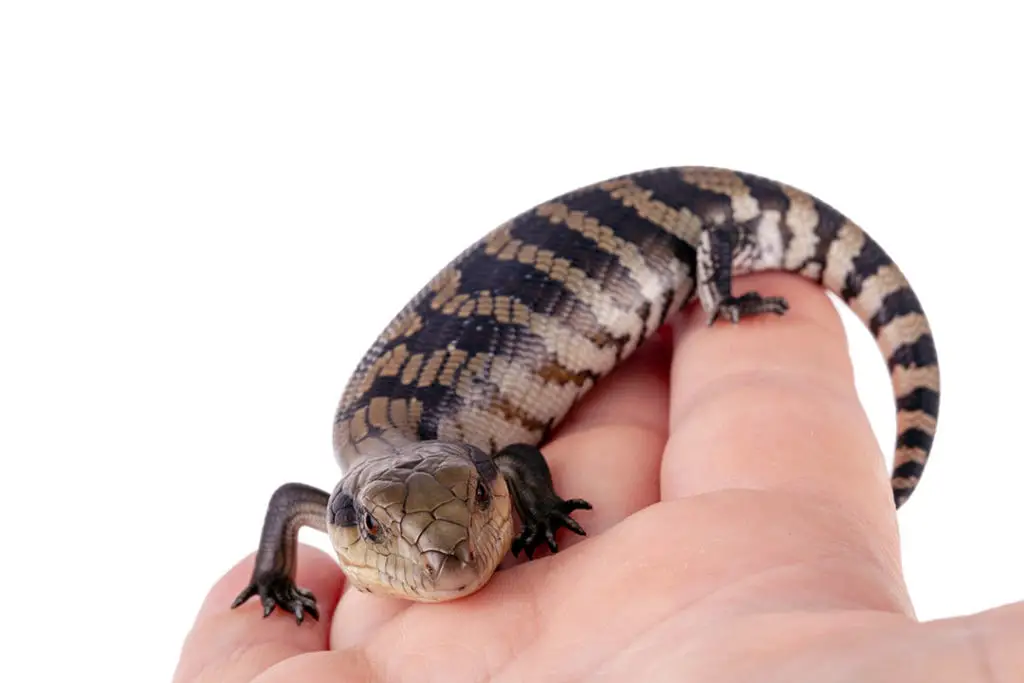
Newborn skinks are very defensive. They are on their own from the moment they are born.
Neonate skinks will go off and start catching their own prey nearly immediately after birth.
They have a lot of predators in their native range.
A young skink needs to be quick, clever, and ready to fight back to have a hope of surviving. Captive-bred skinks may not face predators, but they still have all their wild instincts.
This means that a neonate blue-tongued skink will be defensive and generally unfriendly as a baby.
Young skinks will be willing to fight back. They assume you are a predator and want to hurt them. This means they will struggle if you pick them up and may bite.
It takes time to gain the trust of a young skink. Captive-bred animals will tame down more quickly.
Some blue-tongued skinks will be already on their way to taming down by the time they are old enough to be sold.
A skink with a naturally calm personality will be more likely to tame down quickly.
This is because they already trust humans and just need to learn that you are also safe.
Wild-Caught Skinks
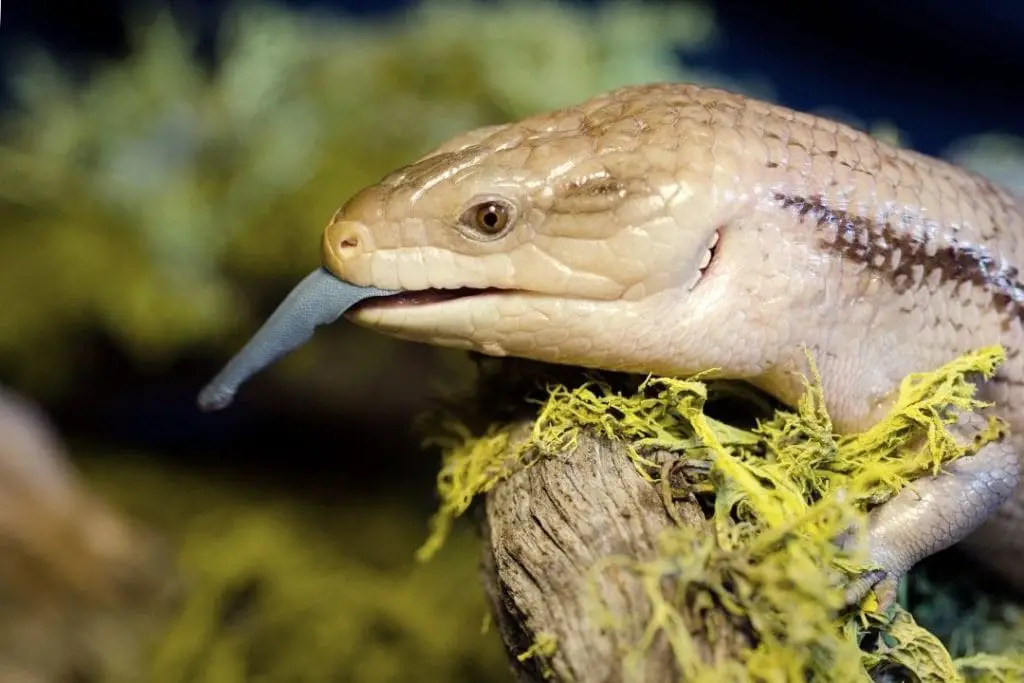
Back when blue-tongued skinks first entered the reptile keeping hobby, they were well-known for their painful bite.
They were considered to be somewhat difficult due to their skittish nature and likelihood to bite. However, this is for wild-caught and farm-bred animals.
A wild skink that isn’t used to humans is going to be scared and stressed out by captivity. Even animals born from gravid females that were taken from the wild tend to be more defensive.
Defensive blue-tongued skinks will bite and otherwise refuse to be handled. Many of the Indonesian species like Marauke and Irian Jaya are still wild-caught.
This means that they are defensive. Wild-caught animals are also more likely to have diseases and parasites. A sick skink will be more defensive since they feel vulnerable.
Many adult Indonesian blue-tongued skinks such as the various Tiliqua gigas subspecies that you see for sale are wild-caught.
You may also see them sold as captive-born, farm-bred, or imported. These make very little difference on how defensive your skink may be.
The only real difference is that farm-bred animals do not remove healthy animals from the wild breeding pool.
If you want a calm and friendly skink, it is better to buy a captive-bred skink. Some Indonesian species are being bred in captivity.
It can take more effort to find a breeder, but even a few generations of captivity make for a better pet.
Captive-bred Skinks
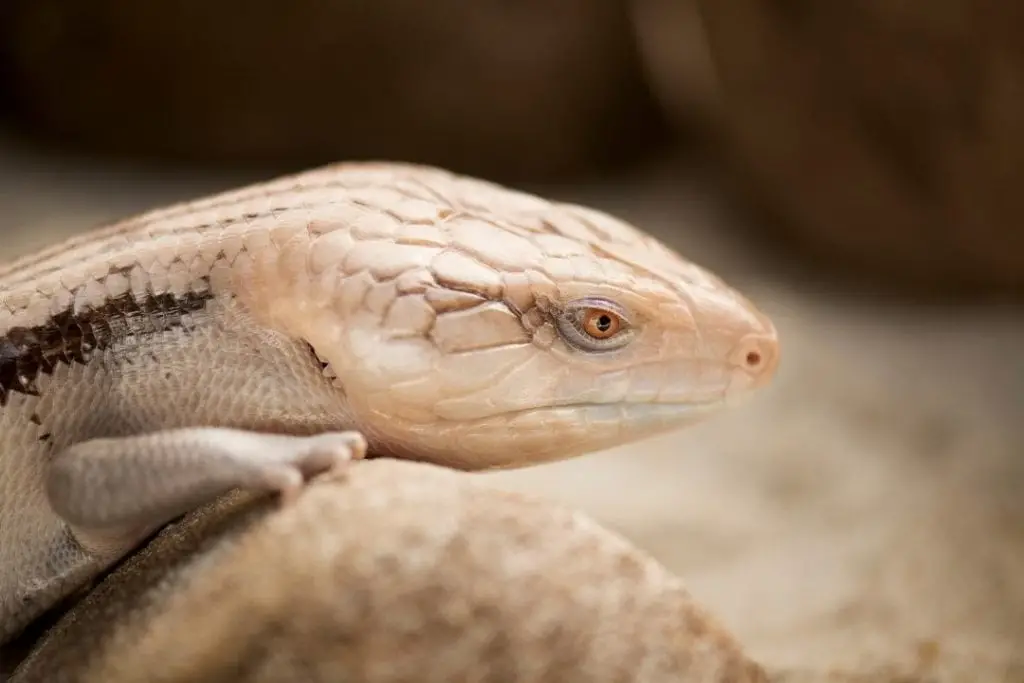
Captive-bred skinks are a different story compared to wild-caught skinks.
Since it has been illegal to export the Australian species for many years, any of those species out of their native country have been in captivity for generations.
This has caused a shift in their behavior.
First, most captive-bred skinks will be defensive when they are young. However, they will tame down quickly.
Most breeders note how each generation tames down more quickly. They will also engage in behaviors that a wild skink never would.
For instance, captive-bred skinks will sleep out in the open. Once a skink is used to humans, they will even sleep while people move around outside their enclosure.
A wild skink will never do this. While skinks are nowhere near domesticated, animals that do better in captivity are the ones that are bred.
Captive-bred skinks are very curious about humans. One important part of enrichment is to place their enclosure where the skink can watch you go about your day.
While all skinks have their own personality, most skinks enjoy watching you as much as you like watching them.
They are also intelligent. Skinks need regular enrichment activities to keep them from becoming bored.
Food puzzles and training are common ways to give captive skinks mental stimulation.
The exact puzzle will depend on the animal, but many enjoy toys like treat balls or foraging for their food.
Some skinks may also appreciate more advanced puzzles like opening different compartments to access a treat.
Captive-bred skinks can also enjoy handling. It can take some time, but you can tame a skink down to tolerate handling.
So long as you support the whole animal, they will eventually calm down and learn to trust you. Many skinks also enjoy being petted.
Stroking down the body or under the chin can be pleasant.
Not all skinks like it, but many will like it. You do need to avoid the top of the head since skinks have a light-sensitive spot on the top of their head called the parietal eye.
This is a light-sensitive “third eye” that alerts the skink if something like a bird or other predator passes over their head.
Conclusion
Blue-tongued skinks make good pets since they tend to be docile and calm. They are very intelligent for reptiles and many owners enjoy their unique personalities, including beginner reptile owners.
If you want a pet that is easy to care for, buying an Australian species like the Tiliqua scincoides subspecies are a good choice.
If you have any questions or comments, please leave them below. If you own a blue-tongued skink, be sure to share more about your pet’s personality.
